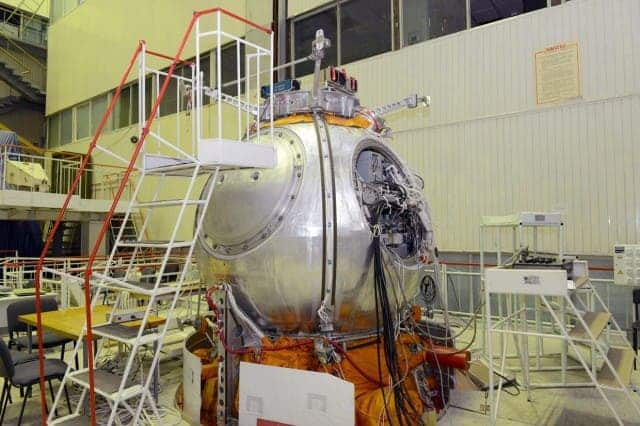In April, the Russian space agency launched the Bion-M craft which carried quite a few mice, gerbils, newts, snails and some microfauna into Earth’s orbit. The experiment was designed to test how weightlesness affect them and how these organisms adapt in the process. The craft returned back to Earth on May 19th in an otherwise safe landing, however most of the animals aboard died due to equipment failure while still in orbit.
The Bion-M satellite was reportedly carrying 45 mice, 8 gerbils, 15 newts along with plants and other small animals. Unfortunately most of the animals died shortly after reaching space because of equipment failure or due to the stresses of space, scientists said.

The mission’s Bion-M life sciences satellite being prepped for launch. (c) Russian Federal Space Agency
The animals were confined in five special containers that automatically opened after reaching orbit and closed once it was time to return. To monitor the animals’ well-being, some two dozen measuring devices and other scientific objects were employed that scoped everything from heart rates and blood pressure to radiation levels. These safety precautions weren’t enough though, since a technical failure led the flight control system to turn off power to the entire unit interrupting oxygen and food supply, light and ventilation.
Not ALL the animals died, luckily, and despite all these setbacks Russian officials were quick to hail the mission as a success. To be fair, the Russian experiment marks the first time that animals have been put in space on their own for so long and the data gathered during the animals’ long stay in orbit has provided valuable data that can be used to assess human adaptation to weightlessnes. Indeed, astronauts aboard the International Space Station have had stays in space much longer than this, some having uninterrupted stays well over a year. Animals were used, however, as it was impossible to conduct some of the experiments on the humans who are currently operating the International Space Station (ISS), as this particular mix of animals could have posed a possible health risk to the crew.
The capsule spun 575 kilometres (357 miles) above Earth and landed back effortlessly with the help of a special parachute system in the Orenburg region about 1,200 kilometres (750 miles) southeast of Moscow. All 15 geckos Chondrodactylus turneri, snails, and other microorganisms survived the flight.
In all, Bion-M could be truly classed a success, marking an important step forward in Russia’s space agency plans of launching manned flights to Mars. Currently, the agency is targeting 2030 for the lunar outpost that will be used for flights to and fro the Red Planet. Russia’s most recent space fairing attempts haven’t been going too well though. Last year, the $170 million Phobos-Grunt mission destined to land on Mars’ moon Phobos didn’t even leave Earth’s orbit and had to be crashed in the ocean.









